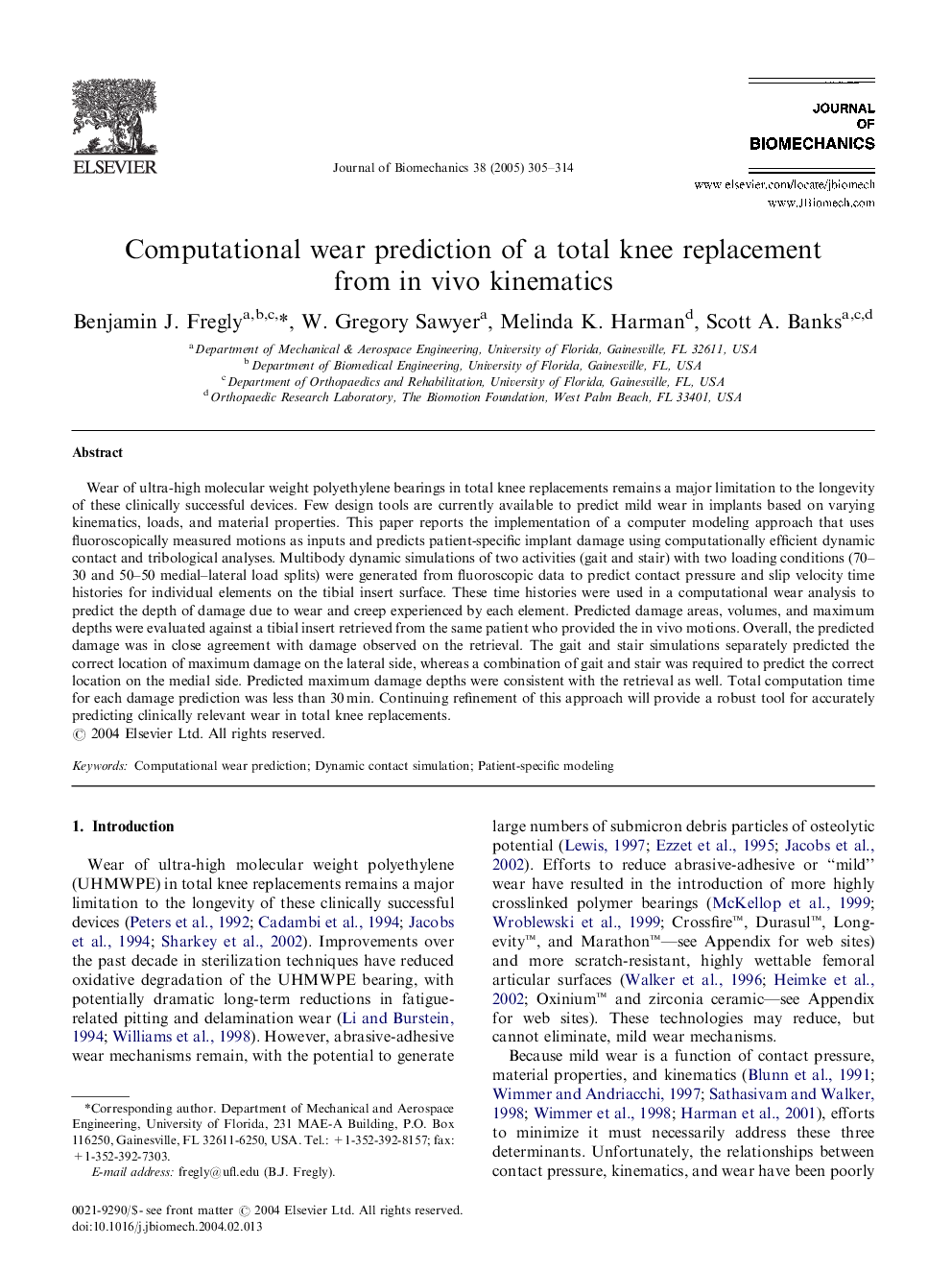| Article ID | Journal | Published Year | Pages | File Type |
|---|---|---|---|---|
| 10434524 | Journal of Biomechanics | 2005 | 10 Pages |
Abstract
Wear of ultra-high molecular weight polyethylene bearings in total knee replacements remains a major limitation to the longevity of these clinically successful devices. Few design tools are currently available to predict mild wear in implants based on varying kinematics, loads, and material properties. This paper reports the implementation of a computer modeling approach that uses fluoroscopically measured motions as inputs and predicts patient-specific implant damage using computationally efficient dynamic contact and tribological analyses. Multibody dynamic simulations of two activities (gait and stair) with two loading conditions (70-30 and 50-50 medial-lateral load splits) were generated from fluoroscopic data to predict contact pressure and slip velocity time histories for individual elements on the tibial insert surface. These time histories were used in a computational wear analysis to predict the depth of damage due to wear and creep experienced by each element. Predicted damage areas, volumes, and maximum depths were evaluated against a tibial insert retrieved from the same patient who provided the in vivo motions. Overall, the predicted damage was in close agreement with damage observed on the retrieval. The gait and stair simulations separately predicted the correct location of maximum damage on the lateral side, whereas a combination of gait and stair was required to predict the correct location on the medial side. Predicted maximum damage depths were consistent with the retrieval as well. Total computation time for each damage prediction was less than 30Â min. Continuing refinement of this approach will provide a robust tool for accurately predicting clinically relevant wear in total knee replacements.
Keywords
Related Topics
Physical Sciences and Engineering
Engineering
Biomedical Engineering
Authors
Benjamin J. Fregly, W.Gregory Sawyer, Melinda K. Harman, Scott A. Banks,
